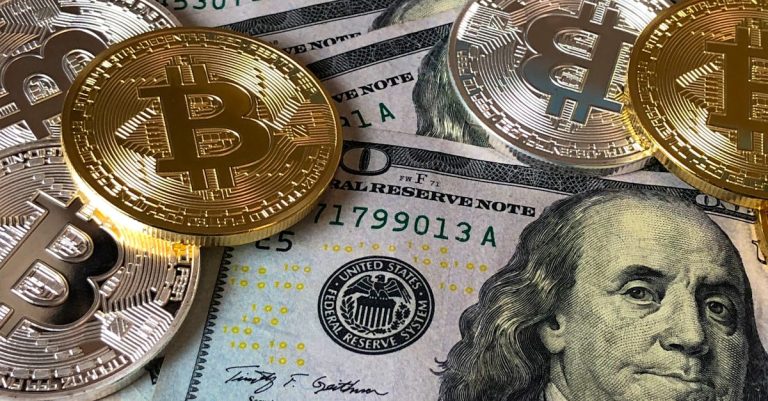Xrp And The Future Of Global Finance
XRP is a digital asset developed by Ripple Labs, Inc., and has the potential to revolutionize global finance. XRP is designed to enable fast, secure, and inexpensive cross-border payments. It has been adopted by several financial institutions around the world as a payment system with numerous potential applications. This article examines how XRP could be used to create an efficient global financial system and explores the regulatory environment that governs its use. Additionally, it provides further reading materials and sources for those interested in learning more about XRP and its impact on global finance.
Overview of XRP
XRP is a digital asset, built upon an open source distributed ledger technology, that facilitates the transfer of value across the globe in real-time. The trustworthiness and security of XRP are two key factors that make it suitable for global financial transactions. Its distributed ledger technology platform ensures that each transaction is cryptographically secure, allowing users to benefit from fast transfers with low fees and minimal counterparty risk. This has been further reinforced by its underlying consensus algorithm which enables all participants to agree on the authenticity and validity of every transaction before its execution. Additionally, XRP’s high liquidity levels ensure that assets can be transferred efficiently without any issues of currency conversion or waiting for settlement. As such, its use in global finance offers a reliable infrastructure for businesses and individuals alike to conduct their financial activities securely and reliably. In conclusion, XRP provides an innovative solution to the challenges associated with moving money quickly and securely across borders without having to rely on third party intermediaries or traditional banking systems. To this end, it promises great potential for transforming international payments into a more efficient system in the future.
Benefits of XRP
Utilizing blockchain technology, Ripple (XRP) offers multiple benefits as a digital asset. One of the major advantages of XRP is its ability to create efficiency gains in global payments, transactions, and settlements. This is due to XRP’s capability to facilitate quick and cost-effective real-time cross-border payment processing. In addition, there are significant interoperability benefits through the integration of different payment systems and networks on the same platform. This helps reduce liquidity costs for financial institutions by providing faster access to global markets. Furthermore, XRP provides increased transparency of transaction data which can help minimize fraud risks and increase accuracy in settlement processes.
All these factors make XRP an attractive option for streamlining traditional financial systems around the world and enable a more secure and reliable payment network for users globally. As such, it has already been adopted by many banks across different countries as part of their international money transfer services. With its promising potentials for transforming global finance, XRP is well poised to become an increasingly important component in the future of finance worldwide.
Current Uses of XRP
XRP has found use in a variety of payment solutions, remittance services, and exchange services. As a digital asset, XRP is particularly well-suited for payments due to its speed and cost efficiency. In terms of remittance services, XRP can facilitate cross-border payments quickly and securely. Additionally, XRP is often used as an intermediary currency when exchanging other digital assets or fiat currencies on trading platforms. All of these uses demonstrate the potential of XRP in global finance today.
Payment Solutions
Payment solutions enabled by XRP have the potential to revolutionize global finance and bring people closer together, as evidenced by the story of a woman in rural India who was able to purchase a new sewing machine for her small business with just one click. This example showcases how XRP’s cross-border payments can provide individuals with access to global markets and services that they may not have had before. The technology behind XRP allows it to facilitate transactions across borders quickly and securely, providing users with an efficient way to send money internationally without having to worry about exchange rates or high fees associated with traditional remittance services. Furthermore, its global reach enables people from all around the world to take part in international commerce, bridging geographical divides and bringing people closer together. With these advantages, XRP has the potential to become an indispensable tool in global finance. By providing fast and convenient payment solutions, it could help close the gap between those who are financially underserved and those who are already established within the financial system. Transitioning into remittance services, we will explore how this technology is being utilized for this purpose.
Remittance Services
Cross-border payments enabled by XRP have the potential to revolutionize the way remittance services are conducted, creating a more efficient and secure system for international transfers. By eliminating the need for intermediaries, XRP transactions can be completed within seconds at a fraction of the cost. This could drastically reduce fees charged on cross-border payments, which are often expensive due to various regulations and currency conversion costs. Additionally, XRP transactions would offer increased transparency in these types of payments as all participants will be able to track their funds throughout their journey. These features make XRP an attractive option for remittance services providers looking to provide faster and more affordable solutions. Moreover, its decentralized nature would allow financial institutions greater flexibility in terms of compliance with existing regulatory frameworks related to cross-border payments. As such, XRP could become an integral component of global remittance services going forward. With this in mind, it is clear that exchange services could benefit from incorporating cryptocurrency technology into their operations.
Exchange Services
Cryptocurrency technology has the potential to revolutionize the way exchange services are conducted, allowing for faster and more secure transactions. Exchange fees can be reduced significantly due to blockchain’s distributed ledger system, which eliminates middlemen and intermediaries in a transaction. This also means that liquidity issues could potentially be alleviated as exchanges become more efficient and cost-effective. Furthermore, cryptocurrency technology increases transparency by providing real-time access to all records of transactions on an immutable, decentralized ledger. This helps to reduce fraud and increase trust among stakeholders involved in these exchanges, thus creating a safer financial environment for all participants. These features of blockchain offer great promise when it comes to exchange services in the future and can help make global finance more accessible and equitable. With this in mind, it is clear that Ripple (XRP) has the potential to play an important role in this emerging landscape of global finance.
Potential Applications of XRP
XRP, a digital asset created by Ripple Labs Inc., has the potential to revolutionize global finance. As such, it is being explored for its use in banking services, capital markets and trading platforms. Banks and financial institutions are looking into XRP’s capacity to enable faster payments with lower costs across borders while capital markets may see the benefit of using XRP for issuing debt or equity securities. Trading platforms could also make use of XRP as an underlying asset for creating derivative products like futures or options contracts.
Banking Services
Ripple’s blockchain-based technology has the potential to revolutionize banking services by providing fast and secure money transfers. By leveraging the distributed ledger capability of blockchain, Ripple can transmit payments quickly and securely across borders while also reducing costs for banks and consumers alike. This would enable banks to offer new services such as real-time payments, borderless transactions, cross-border remittance, low cost international transfers, and more efficient settlement processes. Additionally, cryptocurrency banking could potentially become a viable option in the near future thanks to XRP’s capabilities. Cryptocurrency banking could provide customers with access to faster global payments that are both secure and economical.
These advances have the potential to significantly improve the speed and efficiency of global financial transactions while also improving customer service levels through increased transparency. Moreover, it could reduce risk associated with payment fraud since all transactions are tracked on Ripple’s public ledger which is immutable once recorded. As a result, this technology has opened up exciting possibilities for banking services around the world that could revolutionize how money is transferred globally in years to come. With these advancements in mind, it is clear that XRP has great potential when it comes to capital markets applications as well.
Capital Markets
Recent studies have revealed that Ripple’s blockchain-based technology could reduce transaction times of capital markets applications by up to 40%, providing faster and more efficient settlement processes. This is especially beneficial for the global markets as it allows for quicker transfers of funds with fewer security concerns. In addition, its scalability issues enable institutions to handle large-volume transactions with a fraction of the cost compared to traditional methods. As a result, financial institutions can process payments without worrying about time delays or expensive fees usually associated with cross-border transactions.
The potential impact of Ripple’s technology in capital markets is significant and could revolutionize the way market participants trade assets and settle contracts. With its low latency, fast settlement times, and secure platform, it is no wonder why several major players in the finance industry are looking into this innovative new technology as an option for their capital markets operations. Moreover, its ability to provide users with access to real-time data on global liquidity enables traders to make better informed decisions while trading digital assets on various trading platforms.
Trading Platforms
As digital asset trading becomes increasingly popular, the need for reliable and efficient trading platforms has become essential to ensure successful transactions and secure user data. XRP, a digital asset developed by Ripple Labs, is gaining increased popularity as a form of global money transfer due to its low transaction costs and fast settlement times. Consequently, the demand for trustworthy exchanges that are capable of facilitating the sale, purchase and exchange of XRP has been on the rise.
To meet this demand, various digital currency exchanges have been established that offer users safe and secure access to their XRP holdings while also providing them with different types of tools for managing risk associated with trading in these assets. These exchanges employ advanced security protocols such as two-factor authentication, cold storage wallets and identity verification techniques to guarantee maximum digital security. As such, they provide users with a trusted environment where they can trade XRP without fear of scams or hacks. By providing users with access to reliable trading platforms that are designed specifically for crypto-assets like XRP, these exchanges make it possible for traders from around the world to participate in global financial markets safely and securely. Transitioning into the subsequent section about ‘regulatory environment’, it is important to understand how governments are working together with industry stakeholders in order to ensure that these markets remain transparent and compliant with existing regulations.
Regulatory Environment
The regulatory environment surrounding cryptocurrencies such as XRP is of increasing interest to governments, financial institutions and investors worldwide. Regulations vary significantly from country to country, however, most nations are beginning to recognize the potential of digital assets and enact legislation that will provide legal compliance, data privacy and other protections for users. As a result, stakeholders must remain aware of their local laws and regulations in order to ensure they are compliant. This complexity adds an additional layer of risk that investors must consider when investing in XRP or any other cryptocurrency. Nevertheless, the possibility for significant benefits makes this risk worth taking as long as all applicable rules are followed carefully. In this way, it is clear that understanding the current regulatory environment is an essential component for anyone looking to invest in XRP or any other cryptocurrency.
Given its status as a digital asset with global implications, XRP can potentially have a major impact on global finance if allowed to reach its full potential by a supportive regulatory environment. The development of new technologies such as blockchain has made this increasingly possible due to their ability to support secure transactions while improving efficiency and reducing costs. Thus, it is important for governments around the world to continue developing policies that will support innovation while also protecting their citizens from fraud and abuse within the cryptocurrency markets. With the right balance between regulation and freedom of innovation being achieved through collaboration among stakeholders across countries and industries, XRP could become an invaluable tool for advancing global finance into the future.
Impact of XRP on Global Finance
Cryptocurrencies such as XRP have the potential to revolutionize global financial transactions, providing greater efficiency and cost savings while also offering enhanced levels of security. XRP has the potential to streamline cross border payments, eliminating the need for costly intermediary banks and foreign exchange rates. It can also reduce transaction times from days or weeks down to just a few seconds, making it an ideal solution for international transfers. Additionally, its low cost per transaction makes it attractive for those in developing countries who are excluded from traditional banking services due to high fees or lack of access. By allowing people access to digital assets regardless of their location or economic status, XRP could help promote financial inclusion on a global scale. These factors combined make XRP an exciting prospect for transforming the future of global finance. However, there are still many challenges that must be overcome in order for widespread adoption of this technology to take place.
Challenges Facing XRP Adoption
XRP, a cryptocurrency established in 2012, has been gradually gaining traction in the global finance market. However, its adoption has faced two main challenges: volatility and lack of liquidity. Volatility refers to the price fluctuations of XRP which are more frequent than those of traditional currencies. This makes it difficult for investors to determine the right time to buy or sell XRP, resulting in lost profits and mismanagement of risk. The second challenge is lack of liquidity, which means that there is not enough XRP being exchanged on the market and consequently difficulty for buyers and sellers to find counterparts for their trades. These two issues have proved daunting obstacles to the widespread acceptance of XRP as a viable alternative currency on a global scale.
Volatility
The volatility of XRP, likened to a rollercoaster ride, can be both an attractive and intimidating factor for potential investors. Price speculation and market instability make it difficult to accurately predict the future price movements of XRP, leading to uncertainty in the minds of those considering investing in cryptocurrency. Some investors are enticed by the possibility of making large gains from small investments while others may fear losses due to sudden drops in value. This volatility can also create difficulty for businesses that rely on cryptocurrency as a form of payment or investment capital, as they could face significant losses due to sharp changes in the value of their holdings. In order for XRP adoption to succeed, these issues must be addressed in order for users and businesses to feel secure enough to invest long-term. The lack of liquidity further compounds these issues and will need to be addressed if XRP is going gain wider acceptance as a global currency.
Lack of Liquidity
In addition to volatility, lack of liquidity is another factor contributing to the uncertain future of cryptocurrencies and their viability as a means for payment or investment. Liquidity constraints are an important barrier to adoption, given that buyers will only purchase assets when they can be sold relatively quickly at a fair price. This creates a challenge for digital currencies like XRP as there are not enough buyers and sellers participating in the market and this leads to poor liquidity. As such, the value of XRP could remain volatile due to its lack of liquidity in comparison with other more established digital currencies or fiat money.
The challenge of low liquidity presents an opportunity for Ripple Labs Inc., the company behind XRP, to increase its presence in the global financial system by providing more secure and reliable solutions for payments and investments through its platform. The company has already taken steps towards this goal by partnering with major banks, payment providers, and regulators around the world. By increasing its presence on the global stage, Ripple Labs Inc. could provide greater access to liquidity which would benefit both users and investors in XRP alike. With increased access to reliable sources of funds, XRP could become more attractive as an asset class potentially leading to increased adoption and stability over time.
Opportunities for XRP
Utilizing blockchain technology, XRP presents a viable solution for increasing efficiency in global financial transactions. Ripple’s interoperability allows businesses to transfer money from one currency to another without needing to go through multiple intermediary banks or other institutions. Additionally, the use of smart contracts enables near instant settlement and low cost of transaction fees as opposed to traditional methods of transferring money. As a result, these features make XRP an attractive option for companies looking to facilitate faster and more secure international payments. Furthermore, due to its decentralized nature, XRP is not subject to government regulations which could potentially offer an advantage over centralized banking systems. This could open up new opportunities for businesses that are looking for more freedom and flexibility when it comes to making payments across borders. In conclusion, XRP offers numerous advantages that can help promote greater financial inclusion in global markets and provide increased liquidity in the process. By utilizing its blockchain technology solutions, companies can benefit from improved speed and reduced costs associated with their financial transactions.
Summary
By leveraging blockchain technology, XRP provides an attractive solution for businesses looking to increase efficiency and reduce cost in global financial transactions. Its distributed ledger technology enables trustless cross-border payments which are faster and much more secure than traditional money transfer solutions. XRP also offers a range of digital assets that can be used by businesses for various purposes.
These features offer numerous opportunities for businesses to reduce operational costs, improve transaction speed and security, and expand into new markets with ease. Additionally, the integration of smart contracts into the XRP platform further opens up possibilities for businesses to take advantage of automated processes and improved transparency. The potential applications of XRP as a tool to revolutionize global finance make it an exciting prospect for the future.
Further Reading
Exploring the potential applications of blockchain technology, XRP is like a powerful wave crashing onto the shores of international finance, bringing with it numerous opportunities to revolutionize and optimize the global payments landscape. While many people are excited about the promise that XRP holds for international finance, there are important considerations to keep in mind, such as privacy implications and scalability concerns. As these considerations continue to be explored, further research into XRP’s capabilities will help shape its future role in global finance. With this in mind, a glossary of key terms related to XRP is necessary for understanding how this cryptocurrency could potentially impact our financial systems.
Glossary
The cryptocurrency industry is rapidly evolving, and a thorough understanding of the terminology associated with XRP is essential for informed discussion. Ripple’s impact on global finance has been significant, leading to disruptions in traditional markets as well as new opportunities. Key terms related to XRP include:
- Ledger: A digital record that keeps track of all transactions made with XRP tokens.
- RippleNet: The distributed ledger technology developed by Ripple Labs which makes it easier to transfer money quickly and securely across borders.
- Interledger Protocol (ILP): An open-source protocol created by Ripple Labs that enables payments between different ledgers without requiring third-party intermediaries.
Ripple’s impact on global finance and its potential for market disruption cannot be overstated; understanding these terms allows for more informed conversations about the future of finance on a global scale.
About the Author
Ripple Labs’ founder, Brad Garlinghouse, has been a major force in the development of XRP and RippleNet. He has developed innovative strategies to shape the future of global finance, with an emphasis on the impact of digital assets such as XRP. An analysis of his vision shows his leadership is focused on creating a new financial system that is faster, cheaper and more secure than traditional banking systems. His work has had a profound effect on the industry, leading to increased interest in blockchain technology and its potential applications for businesses all over the world. Through careful consideration of market trends and developments in technology, Garlinghouse has been able to create solutions that are both revolutionary and disruptive at the same time. As Ripple continues to grow and expand its influence globally, it will be interesting to observe how his vision for global finance will continue to evolve and shape our economic landscape in the years to come. Transitioning into sources now, it is important to understand where this information originates from so we can properly assess its accuracy.
Sources
Analyzing the sources of Ripple Labs’ founder Brad Garlinghouse’s vision for digital assets is like peeling an onion – each layer reveals something new. To understand the implications of cryptocurrency and blockchain technology on global finance, it is essential to look at the various sources that have informed Garlinghouse’s ideas. These include studies conducted by governments, research institutions and universities as well as media reports on topics such as cryptocurrency regulation and financial inclusion. For example, a recent report from The World Bank highlighted the need for international cooperation in regulating digital assets while also emphasizing its potential to increase financial inclusion among those who are unbanked or underbanked in developing countries. Similarly, a study published by researchers at Princeton University looked into how cryptocurrencies can be used to reduce transaction costs and enhance economic efficiency. Media coverage has also been instrumental in exploring the possibilities offered by XRP and other digital tokens such as smart contracts and distributed ledgers. Reports from outlets such as Bloomberg have provided insights into how these technologies could revolutionize not only global finance but also industries such as logistics, supply chain management, healthcare, voting systems and more.





 Bitcoin
Bitcoin  Ethereum
Ethereum  Tether
Tether  XRP
XRP  USDC
USDC  Wrapped SOL
Wrapped SOL  TRON
TRON  Lido Staked Ether
Lido Staked Ether  Dogecoin
Dogecoin  Figure Heloc
Figure Heloc  Cardano
Cardano  WhiteBIT Coin
WhiteBIT Coin  Bitcoin Cash
Bitcoin Cash  Wrapped stETH
Wrapped stETH  Wrapped Bitcoin
Wrapped Bitcoin  USDS
USDS  Wrapped eETH
Wrapped eETH  Binance Bridged USDT (BNB Smart Chain)
Binance Bridged USDT (BNB Smart Chain)  Chainlink
Chainlink  LEO Token
LEO Token  Zcash
Zcash  Monero
Monero  WETH
WETH  Stellar
Stellar  Coinbase Wrapped BTC
Coinbase Wrapped BTC  Ethena USDe
Ethena USDe  Hyperliquid
Hyperliquid  Litecoin
Litecoin  Canton
Canton  Avalanche
Avalanche  Sui
Sui  Hedera
Hedera  USDT0
USDT0  sUSDS
sUSDS  Dai
Dai  Shiba Inu
Shiba Inu  Toncoin
Toncoin  World Liberty Financial
World Liberty Financial  Uniswap
Uniswap  PayPal USD
PayPal USD  Cronos
Cronos  Ethena Staked USDe
Ethena Staked USDe  USD1
USD1  Mantle
Mantle  Polkadot
Polkadot  Rain
Rain  MemeCore
MemeCore  Bitget Token
Bitget Token